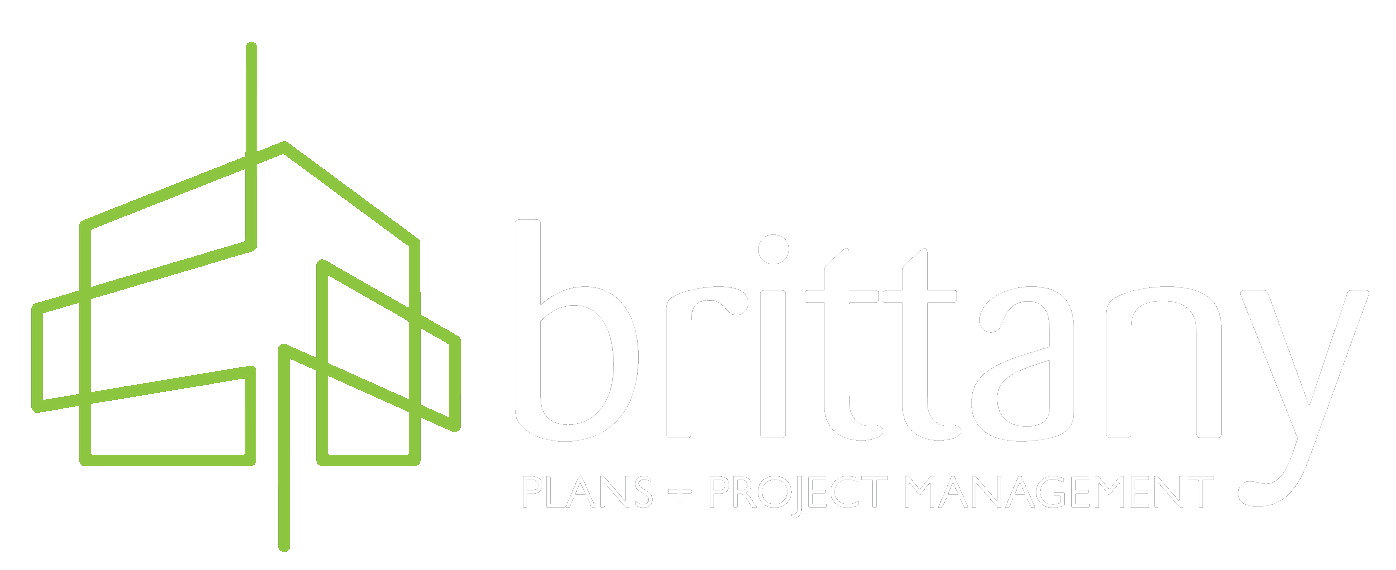Planning Process
Brittany Plans
Which Form: How To Choose The Right CERFA Form For Your Work
When planning to work in France, selecting the appropriate Cerfa form is critical to ensure that your project conforms with all current rules. Here’s a hopefully a useful simple guide to help you choose the best form for your project:
Understand the Nature of Your Work
- Identify the type of work: new construction, extension, exterior alteration, change of use, or repairs.
- Evaluate the work scale, including floor space, building height, and environmental impact.
- Understanding the nature of your task is crucial for successfully completing construction or restoration projects. This understanding has an impact not only on project planning and execution, but also on the selection of required administrative authorizations, such as Cerfa forms in France. Here are some important steps for thoroughly understanding the nature of your work:
Define Project Type:
- New construction refers to the construction of a new building or structure.
- Extension/Renovation: Do you work on expanding or changing existing structures?
- Restoration/Reconstruction: Will the project involve restoring or reconstructing an existing structure?
Determine the scope of the work:
- Small works include replacing windows or renovating a facade.
- Larger projects, such as building a porch or renovating a room, are classified as medium-sized works.
- Large-scale projects involve building new homes and extending existing structures.
Structural Impact:
- How will the work effect the building’s support structure?
Use Changes:
- Will the structure be used differently (e.g., from commercial to residential)?
Identify the applicable regulations and standards
Urban Planning Standards:
- What are the constraints and conditions set by the local PLU?
Environmental and Safety Standards:
- Is your project required to meet specific environmental, accessibility, or safety standards?
Plan administrative procedures
Identify the Corresponding Cerfa Form
Project analysis:
- Determine whether your project is new construction, extension, refurbishment, or alteration of an existing building.
- Project Dimensions: Determine the size of the task, including the floor area or footprint.
Common Cerfa Forms
- Permis de Construire: ‘’Building Permit’’ (Cerfa n°13406) is required for large-scale undertakings like building construction or major additions.
- Déclaration préalable: ‘’ Prior Declaration’’ (Cerfa n°13703): Required for minor works, such as small extensions, facade modifications, or works that do not alter the supporting structure.
- Permis de Démolir: ‘’Demolition Permit’’ (Cerfa n°13405): Required for large-scale structural demolition projects.
Specific Characteristics
- Changes of Use: If the project involves a change of use, such as converting a garage into housing, this may impact the form choice.Environmental constraints: Projects in protected or sensitive regions may require particular forms.
- Taxes and Contributions: Certain forms may require information relating to town planning taxes.
- Where to obtain the correct Cerfa form
- Finding the appropriate Cerfa form for a construction or restoration project in France is possible through various methods. Here are some resources and measures to take to find the correct form:
- French Administration’s official website: Service-Public.fr. This is the French administration’s official portal for finding and downloading all Cerfa forms. It provides quick searches and explanations for each form.
- Local Marie’s Office or Local Prefecture
- For urban planning services, contact your local Marie’s office or prefecture. Their town planning services have the Cerfa forms required for building, renovation and other permits.
- Specialised Websites: Town Planning and Construction Portals: Some websites specialising in the field of construction and town planning offer access to the relevant Cerfa forms.
Get information from the Local Marie’s Office:
- If unsure, call your local Marie’s Office planning department for guidance on the appropriate form.
Be mindful of deadlines and procedures:
- Know the processing time and procedures for each form type.
Documentation to Provide:
- Collect all necessary documents for your form, including project plans and site photos.
Comply with standards and regulations:
- Ensure your project meets environmental, safety, and accessibility requirements.
Request Professional Assistance:
- Consider hiring a professional (e.g., architect, surveyor, designer or planning consultant) to prepare your application.
Request Follow-up:
- After submitting the form, monitor the status and be available for any additional information requests.
Practical advice:
- Use the most recent version of the form. Cerfa forms are regularly updated. Always use the latest version available.
- Complete the form precisely and accurately to avoid delays or refusals.
Urban Planning Code:
- Articles L421-1 to L425-4: These articles cover the rules relating to building permits, prior declarations, and other planning permissions. They provide an overview of the types of work that require formal authorization and can provide guidance on the type of Cerfa form to use.
- Articles R431-1 to R431-39: These articles detail the information and documents to be provided for a building permit application, which can help determine the correct Cerfa form to choose.
- Articles R431-22 and following: These articles specify the documents to be attached for prior declaration requests, which is useful for selecting the appropriate Cerfa form for small jobs.
Civil Code:
- Article 544: This article on property rights is crucial for understanding land use obligations and selecting the appropriate Cerfa form.
Environmental Code:
- Articles L110-1 and following:
- These articles on environmental protection may also be relevant, especially for projects likely to have an environmental impact, thus influencing the type of Cerfa form needed.
Information at the Local Marie’s Office: The Local Marie’s Office planning department can provide precise information on the Cerfa form to be used depending on the type of project.
Cerfa Form Selection FAQ for Construction and Renovation Projects:
How do I know which Cerfa form I should use for my building or restoration project?
- The answer is: To select the right Cerfa form, first define the type and scope of your project. If you are planning a big construction, the building permission form (Cerfa n°13406) is typically required. For modest alterations or extensions, a prior declaration of works (Cerfa n°13703) may suffice. Consult your municipality’s Local Urban Planning Plan (PLU) or get guidance from the local planning authority for particular recommendations.
What should I do if I choose the wrong Cerfa form for my application?
The answer is: If you submit the incorrect Cerfa form, please contact your Local Marie’s Office planning department immediately to correct the problem. You will most likely need to complete and submit the proper form. Act soon to avoid delays in processing your request.
Can I use the same Cerfa form for multiple sorts of work?
- Certain sorts of labour may require specific Cerfa forms. For example, a new construction project will need a different form than an expansion or facade modification. Each form is intended to collect information specific to a type of project.
How do I get the relevant Cerfa forms?
- Answer: Although it is not a requirement, hiring a professional such as an architect or planning consultant can be helpful, especially for complex projects. These experts can help you choose the right form, fill it out correctly, and ensure your project meets all applicable regulations.
Should I engage a professional to complete the Cerfa form?
- The answer is: Although it is not a requirement, hiring a professional such as an architect or planning consultant can be helpful, especially for complex projects. These experts can help you choose the right form, fill it out correctly, and ensure your project meets all applicable regulations.
- When starting a project that requires administrative authorization in France, the first critical step is to choose the right Cerfa form. This technique, which is frequently viewed as a bureaucratic maze, is actually a vital pivot for ensuring that your project complies with the current standards and rules. Identifying the correct Cerfa form is more than just filling out a document; it is the skill of navigating the administrative maze in the most straightforward and secure manner possible.
- Finding the appropriate Cerfa form for your project can be like sifting through a large ocean of papers. Each form is especially designed to fulfil a wide range of requirements, including construction work, renovations to an existing building, and any other activity requiring official permission. Choosing the appropriate Cerfa form necessitates a thorough understanding of your project, including its particular nature, scale, and features.
- Selecting the appropriate Cerfa form is a strategic decision. It’s more than just checking boxes; it’s about efficiently expressing the specifics of your project to the appropriate authorities. Choosing the proper Cerfa form requires a careful examination of your project to ensure that all relevant information is submitted correctly and completely.
- Choosing the appropriate Cerfa form might be difficult at times, especially for individuals unfamiliar with administrative procedures. It is critical to locate the suitable Cerfa form, one that precisely matches the nature of your activity. This may necessitate spending time researching the various options available and determining which one is best for your scenario.
- In summary, traversing the world of Cerfa forms requires attention, precision, and intelligence. Each form is a key that opens the door to the next stage, and selecting the appropriate one is critical for moving on with confidence in your personal or professional tasks.


